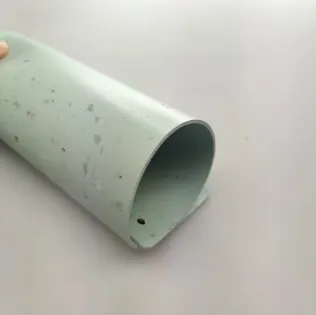
- Afrikaans
- Albanian
- Amharic
- Arabic
- Armenian
- Azerbaijani
- Basque
- Belarusian
- Bengali
- Bosnian
- Bulgarian
- Catalan
- Cebuano
- Corsican
- Croatian
- Czech
- Danish
- Dutch
- English
- Esperanto
- Estonian
- Finnish
- French
- Frisian
- Galician
- Georgian
- German
- Greek
- Gujarati
- Haitian Creole
- hausa
- hawaiian
- Hebrew
- Hindi
- Miao
- Hungarian
- Icelandic
- igbo
- Indonesian
- irish
- Italian
- Japanese
- Javanese
- Kannada
- kazakh
- Khmer
- Rwandese
- Korean
- Kurdish
- Kyrgyz
- Lao
- Latin
- Latvian
- Lithuanian
- Luxembourgish
- Macedonian
- Malgashi
- Malay
- Malayalam
- Maltese
- Maori
- Marathi
- Mongolian
- Myanmar
- Nepali
- Norwegian
- Norwegian
- Occitan
- Pashto
- Persian
- Polish
- Portuguese
- Punjabi
- Romanian
- Russian
- Samoan
- Scottish Gaelic
- Serbian
- Sesotho
- Shona
- Sindhi
- Sinhala
- Slovak
- Slovenian
- Somali
- Spanish
- Sundanese
- Swahili
- Swedish
- Tagalog
- Tajik
- Tamil
- Tatar
- Telugu
- Thai
- Turkish
- Turkmen
- Ukrainian
- Urdu
- Uighur
- Uzbek
- Vietnamese
- Welsh
- Bantu
- Yiddish
- Yoruba
- Zulu
商業用フローリングの最新トレンド:持続可能性と耐久性
In today’s fast-evolving commercial space, businesses are increasingly focusing on flooring solutions that not only enhance the aesthetic appeal of their environments but also offer practical benefits like sustainability, durability, and low maintenance. As organizations prioritize environmentally responsible practices and long-term cost-effectiveness, the demand for flooring materials that meet these criteria has surged. Here’s a closer look at the latest trends in 商業用フローリング持続可能性と耐久性が企業にとって重要な考慮事項であることを強調しています。

持続可能な床材:高まる需要 について 商業用フローリング
持続可能性がさまざまな業界で中心的な焦点となるにつれ、 商業用オフィスフローリング 選択肢は、環境に優しいソリューションへと大きくシフトしています。企業は、責任を持って調達され、二酸化炭素排出量を削減し、ライフサイクルの最後にリサイクル可能な材料を選択しています。
One of the top choices in sustainable flooring is recycled content flooring. This includes options like recycled rubber flooring, which is made from discarded tires, and recycled vinyl flooring. These materials help reduce waste while providing a durable surface suitable for high-traffic areas. In addition to recycling old materials, many manufacturers are now using biodegradable and renewable resources such as bamboo, cork, and linoleum. These natural materials not only provide a sustainable flooring solution but also bring a unique aesthetic to commercial spaces, making them ideal for office buildings, retail stores, and hospitality environments.
The trend toward sustainability also extends to the use of low-VOC (volatile organic compound) products. Low-VOC flooring options, such as water-based finishes and non-toxic adhesives, have gained popularity due to their ability to improve indoor air quality and contribute to healthier work environments. For businesses that prioritize eco-friendly practices, these sustainable choices align well with their broader environmental goals.
耐久性: 交通量の多いエリアにおける最優先事項 について 商業用フローリング
どのような商業環境でも、 商業用 VCT フローリング needs to stand up to heavy use, particularly in high-traffic areas such as offices, retail stores, hospitals, and schools. The latest trends in commercial flooring emphasize the importance of durability to withstand wear and tear while maintaining a professional appearance over time.
Luxury vinyl tiles (LVT) and vinyl composition tiles (VCT) have become go-to solutions for businesses in need of both durability and style. These products are engineered to resist scratches, stains, and scuffs, making them perfect for environments where floors are subjected to constant foot traffic. LVT, in particular, offers the added benefit of resembling hardwood or stone, offering the aesthetic appeal of premium materials without the high price tag or upkeep.
もう一つの耐久性のあるオプションは、ジム、医療施設、教育機関で広く使用されているゴム製の床です。ゴム製の床は、衝撃、摩耗、湿気に対する優れた耐性を備えています。そのため、重機や機械が使用される環境や、安全のために滑り止めが必要なエリアに適しています。さらに、ゴム製の床はメンテナンスが比較的簡単で、定期的に掃除するだけで新品のような状態を保つことができます。
タイルの床材、特に磁器やセラミックは、耐久性を求める企業にとって定番の素材であり続けています。耐久性に優れていることで知られるタイルは、水によるダメージ、汚れ、傷に強いため、レストラン、小売店、さらには医療施設などの場所に最適です。
ハイブリッドフローリングソリューション:持続可能性と耐久性の融合 について 商業用フローリング
In recent years, hybrid flooring solutions have emerged as a popular choice, combining the best of both worlds: sustainability and durability. These floors integrate multiple materials to enhance performance while keeping environmental impact in check.
こうしたソリューションの 1 つがコルクベースのフローリングです。コルクの自然な特性と他の持続可能な素材を融合し、摩耗に強い丈夫な表面を作り出します。コルクは自然に再生可能で軽量であり、優れた熱特性と音響特性を備えているため、騒音の低減が必要なオフィスやスペースに最適です。
もう一つのハイブリッドトレンドは竹のフローリングです。竹は最も成長が早い植物の 1 つで、床材として優れた再生可能な資源です。また、耐久性も高く、現代的なオフィスデザインによく合う、洗練されたモダンな外観です。竹のフローリングは持続可能であるだけでなく、優れた耐久性も備えており、従来の堅木張りの床よりも長持ちすることがよくあります。
メンテナンスの手間が少なく、長期的なコスト効率に優れています について 商業用フローリング
A key factor driving the trend toward sustainable and durable flooring is the growing emphasis on low-maintenance solutions. For businesses, reducing maintenance time and costs is crucial, particularly for high-traffic environments. Flooring that requires minimal upkeep, such as polished concrete or epoxy flooring, continues to gain popularity. These materials are easy to clean and maintain, and they can last for decades when properly cared for.
Concrete flooring, especially when polished or treated with a protective sealant, provides a sleek and durable surface that can withstand significant wear. It is also resistant to stains, spills, and scratches, which makes it a long-term investment for commercial spaces. Moreover, concrete’s energy efficiency—thanks to its ability to absorb and retain heat—can reduce heating and cooling costs, adding to its long-term cost-effectiveness.
フローリングのイノベーション: スマートフローリングソリューション について 商業用フローリング
Beyond traditional sustainable and durable materials, smart flooring solutions are making waves in the commercial sector. These innovative products combine advanced technology with high-performance materials to deliver both functionality and environmental benefits.
For example, smart flooring systems equipped with sensors can track foot traffic, detect wear patterns, and even adjust the temperature of the floor to improve energy efficiency. This technology allows businesses to monitor the condition of their floors, optimize maintenance schedules, and reduce long-term costs. Smart flooring is especially beneficial in commercial buildings, where optimizing energy use and maintaining floor integrity is crucial.
-
Masking Tape: Clean Removal, Precision Lines, Pro-GradeNov.10,2025
-
Skirting: MDF, Oak & SPC | Durable, Easy-FitNov.10,2025
-
Commercial VCT Tile Flooring – Durable, Low-MaintenanceNov.10,2025
-
LVT Vinyl Floors – Waterproof, Scratch‑Resistant, Easy ClickNov.10,2025
-
Masking Tape - Pro-Grade, Clean Removal, Crisp LinesNov.10,2025
-
Premium Masking Tape - Sharp Lines, Clean RemovalNov.10,2025



